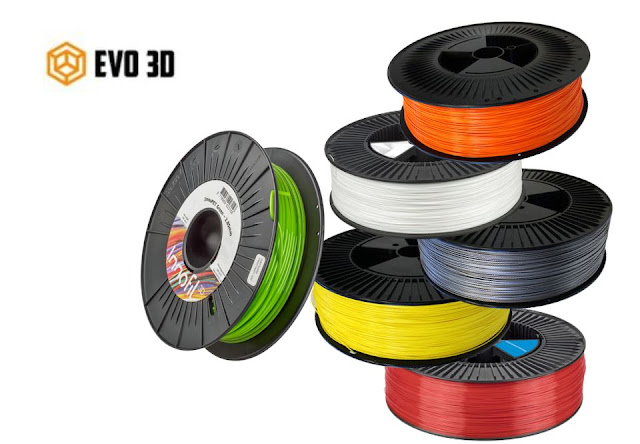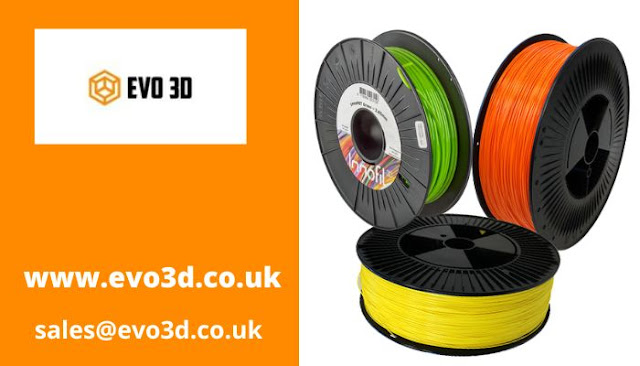An Insight into Various Types of Filaments for 3D Printers
What is a Filament for 3D Printers?
Filaments are a kind of special category thermoplastics. That undergoes a shape change when heated to the right kind of temperature. This property of thermoplastics or filament for 3D printers allows the 3D printer to carve them into the user’s desired shape before it cools down.
Varieties of Filament for 3D Printers
Ever since the evolution of 3D printers began, commonly used filament types in 3D printers are ABS and PLA. Moreover, all 3D printers can’t utilise both these filaments. There are a lot of filament varieties that are entering the 3D printer market every day. Below we will discuss some of the most used ones.
ABS
ABS stands for Acrylonitrile Butadiene Styrene. It is famous for its good impact resistance at low temperatures and for delivering lightweight 3D prints. It is mostly used in the household appliance sector, in creating boat hulls, decoration pieces, toys. And especially for creating the famous bricks developed by LEGO. ABS is non-recyclable and hence harmful to our environment. Evo3D also sells large format FDM printers to meet industry requirements. You can look for various options available to you on Evo3D’s official website.
PLA
Polylactic Acid is another filament for 3D printers that is sold by Evo3D. Organic materials like Cornstarch and Sugarcane are the base ingredients in PLA. Thereby making it an environmentally friendly option. It begins to melt at a comparatively lower temperature than ABS. Unlike ABS, PLA tends to melt, crack, or even bend when the weather is not supportive.
PET/PETG
PET, aka Polyethylene Terephthalate (PET), is a plastic material that offers strength to a 3D print. Besides that, it has a zero-carbon footprint. It is a transparent material that turns translucent or opaque when exposed to cold or hot temperatures. It is one of the first FDA 3D filaments that has been approved for kitchen utensils like cups and plates. This filament for 3D printers is one of the prompting reasons behind 3D printers’ making inroads into households. A new advanced version of PET called PETG or Amphora AM1800 is also available in the market.
Nylon
Chemical or Industry Name: Polyamide. Nylon is a man-made polymer that is stronger and more durable than ABS and PLA. It is one of those affordable 3D filaments that is both flexible and wear-resistant. Thanks to these great properties, you can use Nylon 3D filament to print a variety of products. Most of them are mechanical components and machine parts in factories.
Wood Filament
You may not believe it, but 3D wood filaments are a reality. This filament type was developed for those who wanted to or felt a need to be more creative with their 3D printed projects. This filament contains a careful mixture of recycled wood with a special binding polymer, making it an environmentally friendly filament option. The 3D print you get with this filament smells like wood. People have used 3D printers and wood filament to create decor, ornate boxes, tables and chairs, figurines, and whatever that fascinates them.
TPE Filament
TPE is super stretchy because it is a thermoplastic elastomer. It has such a high level of elasticity that it feels like real rubber, easily springing back into shape like an elastic band. TPE is compatible with most of the FDM 3D printers. If you are looking for a stretchable 3D part that can face more punishment as compared to regular ABS or PLA, then this is your material.
This filament is used in 3D printers that are used in household appliances and automotive sectors. If you are looking for an industrial metal 3D printer, then you can browse through a variety of them in Evo3D showrooms.
Conclusion
It is very important for the owner of a 3D printer to buy a filament of the right type before he begins his job in order to ensure that the 3D print is the one that he wants. This article aims to inform you about the various types of filaments available on the market. Along with their positive and negative points, and how they can help you become creative with your very own 3D printer





Comments
Post a Comment